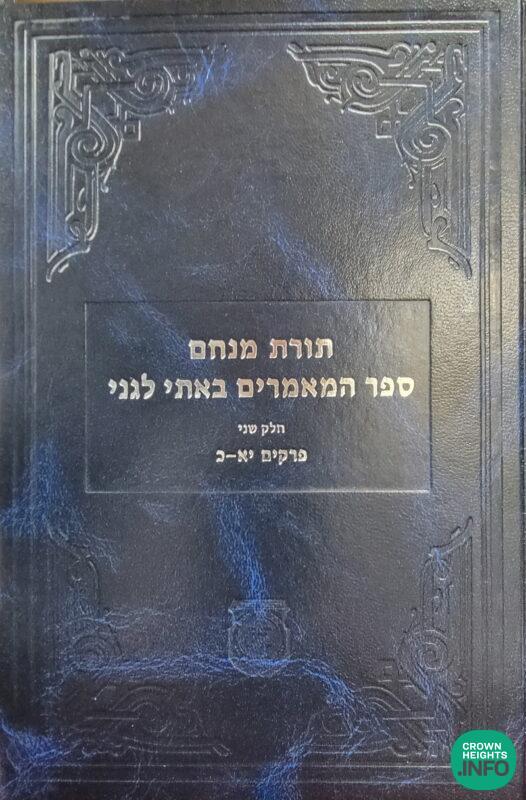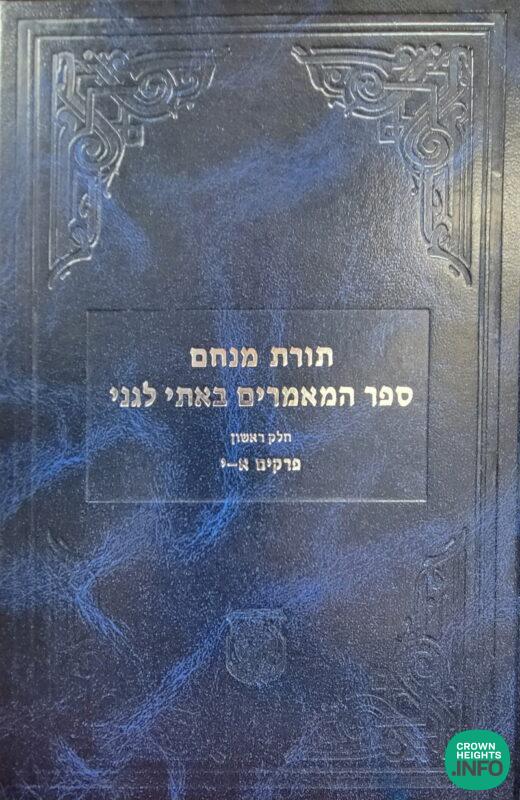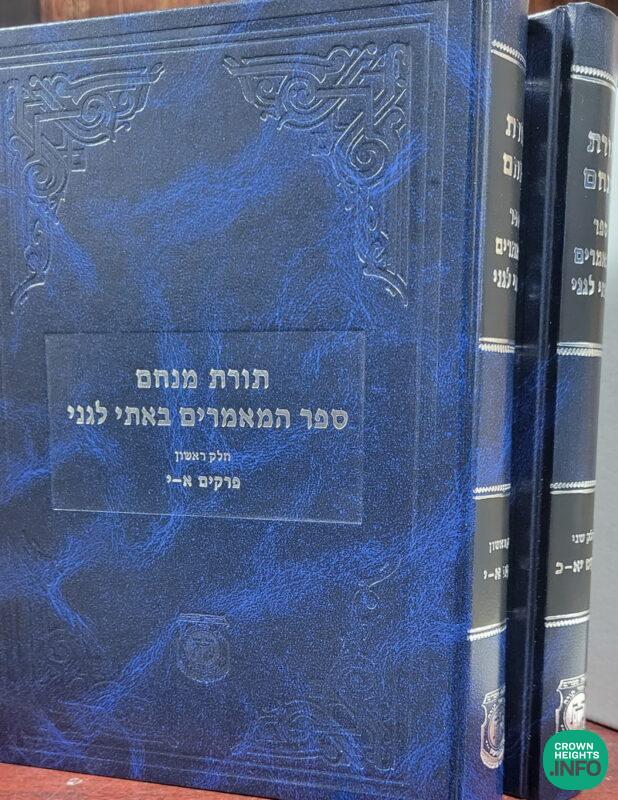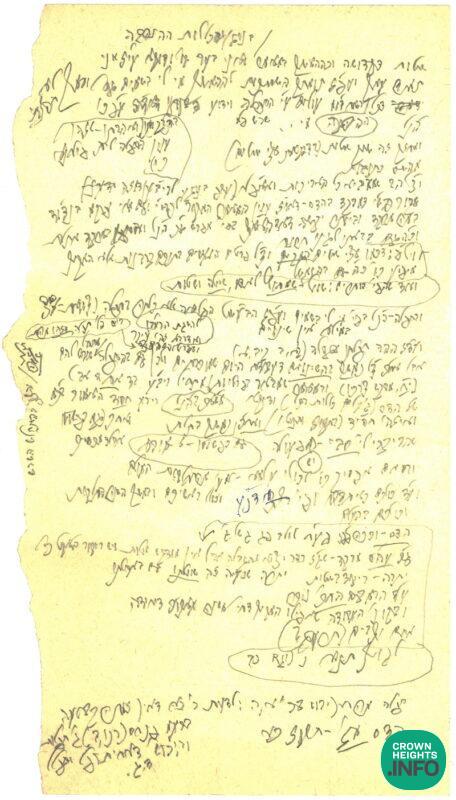
In Time for Yud Shevat—Basi Legani Set Re-Released
Yud Shevat is less than a month away, and the spiritual preparations for the special date marking 74 years to the Rebbe’s nesius are in full swing among Yeshivos, Shuls, Anash communities and Shluchim throughout the world.
What is the best form of preparation? In one of the most famous entries to Hayom Yom, the Rebbe cites a letter of the Frierdiker Rebbe: “You ask how can you be m’kushar to me when I do not know you personally… The true bond is created by studying Torah. When you study my maamarim, read the sichos and associate with those dear to me—Anash and the Temimim—in their studies and farbrengens, and you fulfill my request regarding saying Tehillim and observing Torah-study times—in this is the hiskashrus.”
The first Maamar we merited to hear from the Rebbe was on that first Yud Shevat of the Kabolas Hanesius, in the year 5711, when the Rebbe delivered the Maamar, Basi Ligani. From that date, we merited to hear another 1567 (!) Maamarim from the Rebbe. The Basi Legani Maamarim, however, occupied an important place among them; every year, on Yud Shevat or in the days surrounding it, the Rebbe would deliver another Basi Legani Maamar, dwelling on another chapter of the Frierdiker Rebbe’s final hemshech.
“Rabbi Menachem, the son-in-law of Rabbi Eliezer bar Avunah, said in the name of Rabbi Shimon ben Rabbi Yosnah: Don’t read ‘basi legani,’ but rather ‘ligani—lignuni,’ to my original place…”
These words, from Midrash Rabbah on Shir Hashirim, are the foundation of the Frierdiker Rebbe’s final hemshech, which was published for Shabbos Yud Shevat 5710.
In the Frierdiker Rebbe’s final years, he no longer delivered Maamarim orally each Yom Tov due to his ill health, and would instead give a Maamar from previous years to be published on special dates. The Frierdiker Rebbe would add a new dibbur hamaschil and new kitzurim, and it would be issued with a directive to be studied on the determined Yom Tov or Yoma Dipagra. He would also instruct his son-in-law, the Rebbe—who was responsible for the release of the Maamarim—to add a pesach dovor, footnotes, and various other aspects to the published Maamarim.
The kuntres of Basi Legani was released for Yud and Yud Gimmel Shevat, marking the Yahrzeits of Rebbetzin Rivkah, the Frierdiker Rebbe’s grandmother, and Rebbetzin Shterna Sarah, the Frierdiker Rebbe’s mother. It contained two Maamarim, “Basi Legani” and “Hayosheves Biganim,” each with five chapters, to be learned on the respective dates. These Maamarim were the opening of a hemshech the Frierdiker Rebbe delivered twenty-seven years earlier, on Yud Shevat 5683, which began with the words “B’etzem Hayom Hazeh” (continuing with Basi Legani in the second paragraph).
The next morning, on Yud Shevat 5710 at about eight o’clock, the Frierdiker Rebbe was nistalek.
When Purim that year arrived, the Rebbe released a second kuntres, with an additional five chapters of the hemshech, without a dibbur hamaschil—because the Frierdiker Rebbe had not provided one before his histalkus. A third booklet was released in honor of Beis Nissan, the Yom Hilula of the Rebbe Rashab and the day of the Frierdiker Rebbe’s kabolas hanesius, containing the final ten chapters of the hemshech, bringing it to a total of twenty chapters.
Throughout that first year, the Rebbe spoke a lot about the hemshech, and said that the Maamarim contained all the answers and directives necessary after the Histalkus. “In the final hemshech,” the Rebbe said, “the Rebbe clarified everything, and hinted to everything. All the answers to the questions people ask me—I search for them in these Maamarim.”
It was during the historic farbrengen of Yud Shevat 5711, on a Wednesday night after the close of the first Yom Hillula, that the Rebbe delivered his first Maamar.
At 10:40, as he peered into the kuntres of Basi Legani sitting on the table before him, the Rebbe said, “In the Maamar that the Rebbe gave for his Yom Histalkus, the Rebbe begins with the words, ‘Basi Legani.’” The Rebbe then switched to a tune of a Maamar, and began, “Basi Legani Achosi Kallah…”
From that year on, every Yud Shevat, the Rebbe expounded on one of the chapters of the Frierdiker Rebbe’s hemshech, completing the entire cycle on Yud Shevat 5730. From 5731 until 5748 the Rebbe continued with a second cycle. The Rebbe would note in the Maamar published for Yud Shevat that it was based on the designated chapter of the hemshech.
Over the years, Lahak Hanochos has published the entire collection of those Maamarim in a beautiful two-volume set in the series of “Toras Menachem – Maamarim – Parshiyos U’Moadim”; it contains all 53 Basi Legani Maamarim, along with another seventeen ‘sister’ Maamarim which were said in association with the hemshech. Thirteen of the Basi Legani Maamarim were actually edited by the Rebbe and published in Sefer Hamaamarim Melukat as well.
In recent years, the Basi Legani set—published for the sixtieth anniversary of Yud Shevat—ran out of stock. Now, Lahak Hanochos is pleased to announce the release of a new and improved edition, including two Maamarim that were omitted in the previous set: “Yafe Sha’ah Achas’ 5723, and “Amar Rav Oshiah” 5743.
Images of the Rebbe’s kisvei yad, with original content in the Rebbe’s own handwriting, have always been cherished among Chassidim. In that light, Lahak included relevant kisvei yad at the opening of each chapter of the Basi Legani hemshech.
In the first Basi Legani, the Rebbe mentioned all of the Rabbeim, and he continued to do so in every Basi Legani that followed. Often, the Rebbe would note down the list of sources that he would cite in the Maamar, and on other occasions, he wrote it out for Reb Yoel Kahan, to assist in the chazarah and publication of the Maamar. After 5731, when the writings of the Rebbe’s father, Horav Levi Yitzchak were published, the Rebbe began to mention his father in the Basi Legani Maamarim as well.
Below you can find two such examples of the Rebbe’s handwriting: 1 – a list sent by the Rebbe to Reb Yoel for Basi Legani 5729, with the instruction that those footnotes be inserted into the hanachah. 2 – A page filled with the Rebbe’s handwriting on a topic regarding Basi Ligani 5735.
Year after year, Chassidim have continued to study the relevant Basi Ligani Maamarim, continuing into the third and then the fourth cycle. Lahak Hanochos therefore, this year, released a special booklet with the relevant Maamarim for this year—Basi Legani 5724 and 5744. Click here to access the kuntres in booklet form: https://www.lahak.org/media/pdf/1254/tKIf12547066.pdf
To download the kuntres in a readable format, click here: https://www.lahak.org/6189577
The new set of Basi Legani Maamarim is available in all Kehos stores and Heichal Menachem branches, and in Judaica and seforim stores in Anash communities worldwide.

















